AI art is a controversial topic. Some love it, some hate it. So why are artists against AI art, albeit those image generators are so popular? In this post of the AI Art vs. Human Art series, we’re going to delve into what artists think when it comes to the question whether AI-generated art is art or not. Let’s dive in and have a discussion, because artificial art affects all of us!
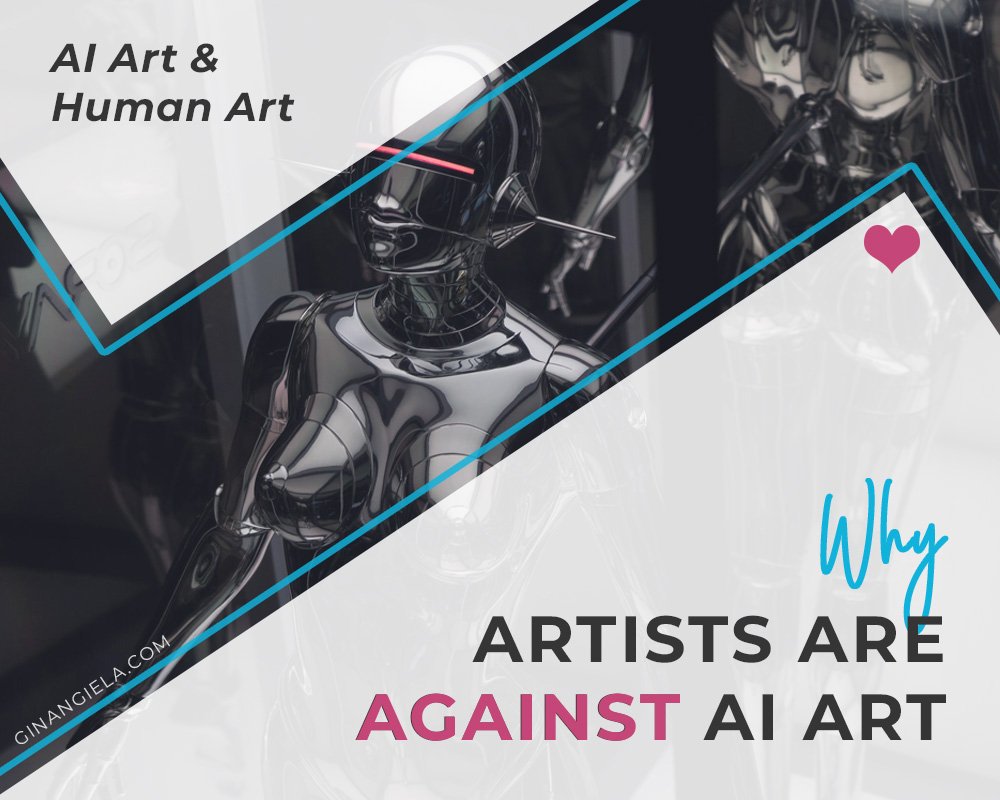
The first AI art generator debuted at the beginning of 2021. That was the first version of DALL-E. A year later, OpenAI launched the second version of their text-to-image generator. DALL-E 2 came with improved machine-learning algorithms, better image quality – and a warning.
The company cautioned that “the model may increase the efficiency of performing some tasks like photo editing or production of stock photography, which could displace jobs of designers, photographers, models, editors, and artists.”
In the meantime, DALL-E got joined by many more image generation tools, such as Midjourney, Stable Diffusion, and Artbreeder. All these systems allow you to create art from text or from a photo that you upload yourself.
All you need to do is enter some text describing the kind of image you want to have. After a few seconds, the machine will return a photorealistic render, an anime character, a drawing, or a painting – it’s all up to you.
Why is AI-generated art so popular?
When you look at the way image synthesis models (ISMs) allow you to create images, you know why AI-generated art is so popular. Because it is so easy.
There must be a reason why we’ve been seeing millions of AI images since mid-2022. And this isn’t an exaggeration. In fact, AI users generate 20 million images EVERY SINGLE DAY.
Since artificial image generation technology has hit the market, literally everyone can try their hand at ‘art-making’. Without any artistic skills whatsoever, you can even venture into ‘creating new artwork’ in the unique style of any artist that ever lived.
Understandably, that has led to a lot of controversy. In one of the previous posts of my AI Art vs. Human Art series, I’ve already talked about why artists question the ethics of AI art and why some alleged that AI art is stealing from artists.
My intention with this series is to view AI art from a broad range of angles, share my own views and experiences, and invite you to do the same in the comments! I’d like to know what you are thinking.
In my last post, I looked at the different opinions artists have about AI art. In this post, I want to go on talking about why artists are against AI art and share the opinions of different creatives, apart from my own.
After reading OpenAI’s ‘warning’ for their art generation app, you understand why people feel that AI is a threat to artists. And the essence of this warning is also one of the main reasons why artists are against AI art.
One of the biggest fears artists are having is that AI art might be coming for their jobs.
“These AI seem like harmless fun but they are predatory and intend to replace artists.” This is how voice artist Jenny Yokobori sees it.
Sean Michael Robinson, comic book illustrator who is using Midjourney himself, confirms this. “The type of work I do, single images and illustrations, that’s already going away because of this. Right now, the AI has a little trouble keeping images consistent, so sequential storytelling like comics still needs a lot of human intervention, but that’s likely to change.”
While most artists agree that AI is very unlikely to replace professional full-time artists, it might well be used to replace smaller-scale work like illustration or design jobs.
Movie and game concept artist RJ Palmer gives a good example. “I have seen a lot of self-published authors and such say how great it will be that they don’t have to hire an artist”, he says. “Doing that kind of work for small creators is how a lot of us got our start as professional artists.”
With criticism coming from so many sides, the developers of image synthesis models (ISMs) don’t want to add fuel to the fire.
Andrey Usoltsev, CEO of Prisma Labs, the company behind the Lensa app, wrote in a tweet: “As cinema didn’t kill theater and accounting software hasn’t eradicated the profession, AI won’t replace artists but can become a great assisting tool.”
On a similar note, Emad Mostaque, founder of Stable Diffusion, asserts: “I won’t allow us to build tools to replace artists. It’s simple as that because it matters to me. Let’s be clear, these tools require a skilled artist.”
I don’t doubt that AI art can help artists, when used in an ethical way. But the truth is that nobody knows where AI art is going to take us. Only the next coming years will show whether AI art is going to take over artists or if it will be assimilated as an assisting tool. Ultimately, it depends on us – humans.
“I see people on both sides of this extremely confident in their positions, but the reality is nobody knows,” says technologist Andy Baio. “And anyone who says they know confidently how this will play out in court is wrong.”
Artist Karla Ortiz, who has worked for Ubisoft, Marvel and HBO, is hoping for better legal regulations. “I know the coming legal battles will change the landscape. All I can hope for is that the law will move quickly to protect our creative livelihoods, while simultaneously allowing for these new technologies to grow in a way that is beneficial to us all, not just a handful of companies and developers.”
AI systems have not only been developed to generate visuals. They are basically making their way into all areas of life. There are already apps out there that can create text and poetry. Those could be potentially used to replace book authors, content creators, and lyrists. But artificial intelligence can also create music.
In fact, it is much easier for AI to replicate sound than visuals. As AI has already successfully generated music based on Bach’s compositions, we might soon be facing more generative music. That’s the good news.
Why? Just imagine that everyone can use AI to create a pop song ‘in the style of Beyoncé’ or a rap song ‘in the style of Eminem’. What do you think is going to happen? I highly doubt that these industry giants will sit and watch their work get exploited. Plus, the labels behind those music artists are much more cash-strong than any visual artist. That’s why I see good chances for stricter legal regulations to be established once this sector brings their power to bear.
Are you worried about your creative future with all the machine-made imagery swallowing up the market?
Worry not, AI art is not better than human art, and you don’t have to stand back and watch all your hard work get lost in the flood of artificial mass production. You can do something about it. Start now and learn how to promote your art when AI is the end of artists (supposedly)!
But no matter how we twist and turn, AI will change the art world.
Jason Juan, an art director who has worked for gaming and entertainment clients like Disney and Warner Bros. says about AI: “It will allow more people who have solid ideas and clear thoughts to visualize things which were difficult to achieve without years of art training or hiring highly skilled artists. The definition of art will also evolve, since rendering skills might no longer be the most essential.”
Why AI-generated art is not art
This brings us to the next point of contention. Let’s talk about the definition of art.
The word “art” stems from Latin “ars” and implies things like acquired skill, craftsmanship, and artistic achievement. It describes the expression or application of human creative skill and imagination. The usually visual end result is meant to be appreciated for its beauty and emotional power. Making art also requires critical thinking and problem solving capabilities.
Mmh. Above, we already learned that Juan sees the evolvement through AI art in the fact that something that used to be difficult is now easy “to achieve without years of art training” or without being “highly skilled.” Interesting, isn’t it?
The reason so many artists feel that AI-generated art is not art is because it is so very easy to create.
Everyone who can type in a string of words is now an artist – or at least likes to think of themselves as one.
Jon Juárez, an artist who has worked with Square Enix and Microsoft, put it this way: “Many authors see this as a great advantage, because this harvesting process offers the possibility of manipulating falsely copyright-free solutions immediately, otherwise they would take days to arrive at the same place, or simply would never arrive.”
A popular avatar artist from the Vtubing space by the name of Lucks concurs with this view. “In the broader scope, I see this as outsiders with bad intentions trying to force themselves into the art community just like with NFTs last year,” he says. “They want to put in no effort, but reap all of the rewards.”
Zentith, another VArtist, adds: “What seems to be happening is advancement that profits off of the hard work of thousands without consent. This kind of technology is made specifically to circumvent having to use creativity and imagination and of course, to circumvent having to pay real artists.”
Then, there is still the emotional component as an essential part in the definition of art.
In the eyes of Jodie Cai, this is exactly what is missing in AI art. “AI is so different from what I associate with art, since its whole basis is to be neutral and almost emotionless,” he says. “For me, art is all about the intimacy of the relationship between the artist and the art piece, as well as the emotions conveyed.”
Comic artist and animator Mervin Malonzo agrees that true art-making requires an emotional touch: “I’ve tried out AI art generation, but most of the time I’m not satisfied with the pieces that come out of my prompts,” he states.
“I learned that you have to provide a ton of specific descriptions for it to work better, and if that’s the case, then I feel that it would still be better if I just drew my ideas myself. For me, the point of art-making isn’t just the final artwork, but it’s also the process itself. That’s what I enjoy about it, so I doubt that AI art generation is for me.”
Despite working with AI herself, conceptual artist Anna Ridler finds that it lacks innate characteristics of art. “It flattens it down into thinking of art as interesting wallpaper, rather than something that is trying to express ideas and search for truth. AI can’t handle concepts: collapsing moments in time, memory, thoughts, emotions – all of that is a real human skill, that makes a piece of art rather than something that visually looks pretty.”
So much for the sceptics. But there are still the AI art enthusiasts on the other side.
A lot of people are fascinated by what AI can do. And I have to admit, when I set out to create my first images on Midjourney, I was flabbergasted, too. It’s amazing to see what kind of complex images AI can put together in just a couple of seconds.
It’s not that I wouldn’t know what I’m talking about. I’ve already tried out an AI generator myself (Midjourney) and used one of the images as the background in ‘Scared Bunny‘. Actually, this was my first ever generated AI image. I speak more about my experiences with image generation in my first post on whether AI art can be considered real art.
Lee Unkrich, animator at Pixar, thinks it’s magic. “It feels like a miracle. When the results appeared, my breath was taken away and tears welled in my eyes. It’s that magical.”
So how do AI users counter the reproach that AI-generated images are not art because they lack the human component?
The common answer is that AI art is a co-creation between human and machine. Artist Leandro Castelao, for example, believes that “there’s an active role between the piece of art and the viewer. In the end, the viewer is the cocreator, transforming, recreating and changing.”
Pindar van Arman, a classically trained artist who has been coding art robots for over a decade, sees his role in generative art as that of an “art director.” He explains that while the “machine has evolved over time to become a highly intelligent system capable of making creative decisions of its own accord, the final piece of work could only be described as a collaboration between human and machine.”
David Holz, the founder of Midjourney, sees the emotional component in the therapeutic effect of AI art. “A huge portion of the entire usage is basically art therapy. The images are not really aesthetically appealing in a universal sense but are appealing, in a very deep way, within the context of what’s going on in people’s lives.”
What about the skills?
AI art sceptics like to argue that image generation cannot be considered art because it is so easy that anyone can do it, without any artistic skills.
Jason Allen, the award-winning AI artist, sees it this way: “You have to learn how to manipulate the software because you might not get the results that you want to see. You constantly have to try different phrases and words and creative inputs that give you the results that you’re looking for. And that’s a skill.”
Kevin Kelly, executive editor of the magazine Wired, states that “AI co-creations” are “the result not of typing in a single prompt but of very long conversations between humans and machines. Progress for each image comes from many, many iterations, back-and-forth, detours, and hours, sometimes days of teamwork.”
The 70-year old former publisher adds that he has “spent the past six months using AIs to create thousands of striking images, often losing a night’s sleep in the unending quest to find just one more beauty hidden in the code.”
In fact, I hear a lot of AI users speak about how they spend sleepless nights trying to figure out even better prompts to generate yet another image that hopefully comes closer to what they have in mind.
However, the way I see it, it’s more some sort of fiddling around than targeted application of a particular technique. It’s not like that you pick a brush and move it across the canvas and you know exactly what you are doing and what the result is going to be like. In other words, it’s more about trial-and-error than about skill. Most notably, it’s not about artistic skills. If anything, then it’s maybe about linguistic skills or coding skills.
But what such statements are making utterly clear – and what I experienced myself in the short time I was trying out AI art – is its addictive character.
Yes, AI art is highly addictive.
It’s a dopamine hit. It sucks you in, way more than any social media platform like Instagram or TikTok ever could. At least to my experience. It’s incredibly tempting to keep playing with new prompts just to see what AI puts out in response.
You enter just another prompt until artificial intelligence spits out something that thrills you even more… and more… and more. But in the end, what do you have? A hard disk full of pretty looking images that a machine churned out for you. But if I may take a wild guess, I would say it’s nothing meaningful. Odds are you’ll forget about most of the pretty images you have on your hard disks only a couple of days after having generated them.
This ease of creation is also the reason why AI-generated art is so popular.
It saves people the trouble of putting in the work. One of the main points of contention in the digital art debate that made people say fine art cannot be digital was the lack of exertion.
Petra Cortright, for example, explains her liking for digital art by its perceived effortlessness. “I’ve tried regular painting before – it’s the slowest, dumbest thing on the planet. You can’t undo, you can’t copy and paste, I don’t have the patience for it. The whole waiting for paint to dry thing just doesn’t work for me.”
Admittedly, digital art is easier than traditional art. But there is still a whole range of skills you need to be a digital artist. Once you have acquired the necessary skills, you are better able to accomplish your creative vision. AI art is a cakewalk as compared to digital art, but it’s not even half as gratifying. Because you’ll never get the specific image you have in mind.
- Stay in touch!
Our Newsletter is packed with creative tips, free tutorials, art tool reviews, and looaads of inspiration!
The way I understand art-making, it's all about striving to master your craft to the point where you achieve your creative vision – every time you create art.
In that regard, it’s a pretty straightforward process. First, you use your imagination to form a mental image of what you want to create. Second, you grab your preferred tools of the trade and apply the practiced techniques to bring your vision to the canvas.
The more proficient you are, the faster you will achieve the desired result and the closer it will be to what you envisioned. And the more satisfying the creative process.
AI art is always experimental and random. You will never get the exact same thing you have in mind, no matter how many iterations and detours you take. At the end of the day, you will have to deal with what artificial intelligence gives you.
Mario Klingemann, an AI artist who makes his living selling NFTs, puts it like that: “If you have a very specific image in mind, it always feels like you are up against a forcefield. Commands like ‘shade this area’, ‘enhance this part’, and ‘tone it down’ are obeyed reluctantly. The AIs have to be persuaded.”
Visual artist Juan Alcazaren even compared AI art to textured vegetable protein (TVP) that vegans use as a meat substitute: “You’re full but not satisfied, and there’s a strange aftertaste.” Huh. What an analogy.
But let’s come back to the skill question.
AI art generators were designed with the intention to make art-making accessible to everyone.
Andrey Usoltsev of Prisma Labs states that “the democratization of access to technology like Stable Diffusion is quite an incredible milestone.” He elaborates further that “what was once available only to techy well-versed users is now out there for absolutely everyone to enjoy. No specific skills are required.”
Carson Grubaugh, a comic book illustrator working with Midjourney, remains sceptical. “Whenever I hear people talking about ‘democratizing access’ and ‘transparency,’ I get worried. What that usually means is that the big companies are helping themselves to our data and using it for their benefit.”
Illustrator Guia Abogado also has a bone to pick with the ‘democratization of art’. “The technology will still end up being monopolized by the elite. This is evident given that the more decent AI programs are still locked behind a paywall.”
Democratization of art or not, what I notice is that we are increasingly losing our self-reliance. When I went to driving school, I still learned to drive a stick shift. Nowadays, people only know how to drive an automatic. And very soon, we will not even know anymore how to drive a car at all because electric cars are driving for us.
Very soon we will not know anymore how to create art because artificial intelligence is creating art for us. We will not now anymore how to write because artificial intelligence is writing for us. Likewise, we will not know anymore how to compose because artificial intelligence is composing music for us.
In my mind, generative art deprives people from developing their imagination and acquiring artistic skills on their own.
Yes, I see it as deprivation. It does not only deprive them from learning artistic skills. It also deprives them from developing qualities like perseverance, determination, taking risks, and dealing with setbacks. Why? Because developing a creative skill comes with all of that. First off, you need to stay dedicated and put in the hard work to see some reasonable results at all.
More often than not, your first creations won’t look anything like expected. This is where you need to keep going. With enough practice and persistence, you will finally become proficient at your craft. At some point on your creative path, you might want to try out new things. You will have to take the risk of facing rejection and disapproval from people seeing your art.
To stay on your path, you will need to work on building creative confidence and resilience. All these are qualities that are not only useful for your artist life but for life in general.
If you can develop these qualities in a smaller field like your art, it will be much easier for you to eventually make use of them when the going gets rough and the rubber hits the road. (*‿¬)
The reward of your hard work and effort is the ability to create exactly what you have in mind.
The more you practice, the better you will become at realizing your mental image on the canvas. And that’s an incredibly joyful and satisfying experience. Because you made it. On your own.
Most of the people that I see jumping on the AI art bandwagon are non-artists. They are the ones flooding their galleries with dozens of images per day without having created anything on their own ever before. There must be a reason for that. Odds are they were never dedicated enough to develop any of the qualities I mentioned above.
But I also see some ‘real artists’ (usually from the digital arts) integrating AI into their work. Most of the time, they use it scarcely. For example, they only include parts of AI images into otherwise self-made digital creations.
If they use full AI-generated images, they only upload those pieces that perfectly match the style of their portfolio. They post-process the images and clean up all the shortcomings that generative AI still comes with. Unfortunately, there are also a few artists who already had developed a beautiful signature style and now disrupt their bodies of work with AI pieces that don’t match at all. That’s rather a pity.
As Anne Ploin from the Oxford Internet Institute said so eloquently: “The main message is that human agency in the creative process is never going away. Parts of the creative process can be automated in interesting ways using AI (generating many versions of an image, for example), but the creative decision-making which results in artworks cannot be replicated by current AI technology. Don’t let it put you off going to art school. We need more artists.”
Yes! I fully agree.
One thing is for sure: AI art is a topic that divides the minds, and now I want to know how you are feeling about AI art! Please leave comments and questions below or reach out to me directly. I’d love to hear from you! Make sure to sign up for my email list below so you don’t miss out on new blog posts and other cool stuff. ♥
For more about the topic, check out more posts from my AI Art vs Human Art series:
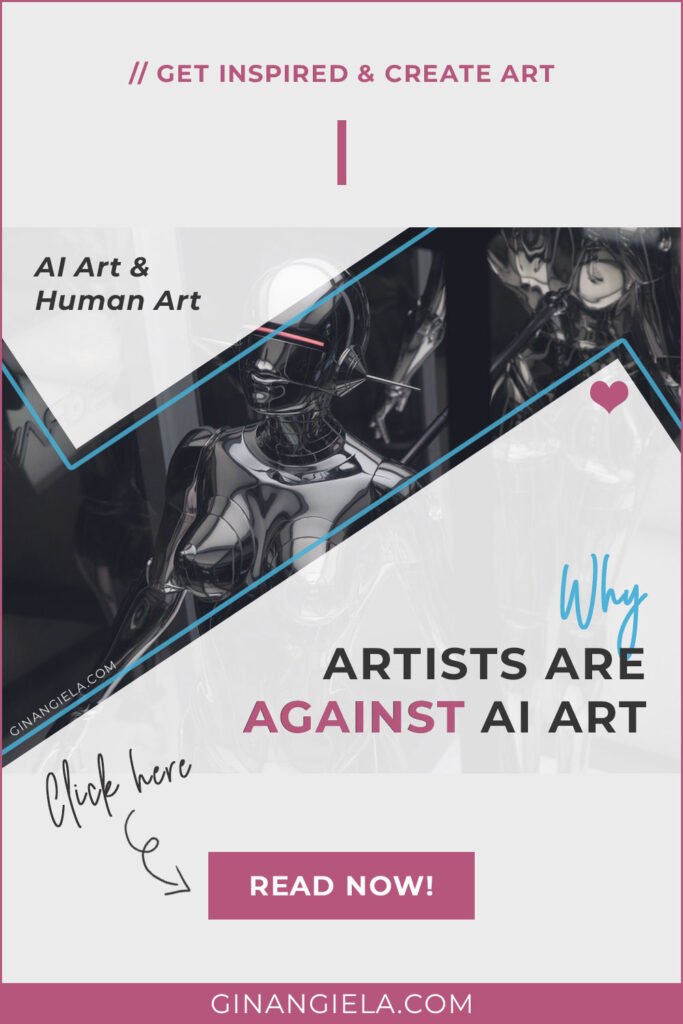
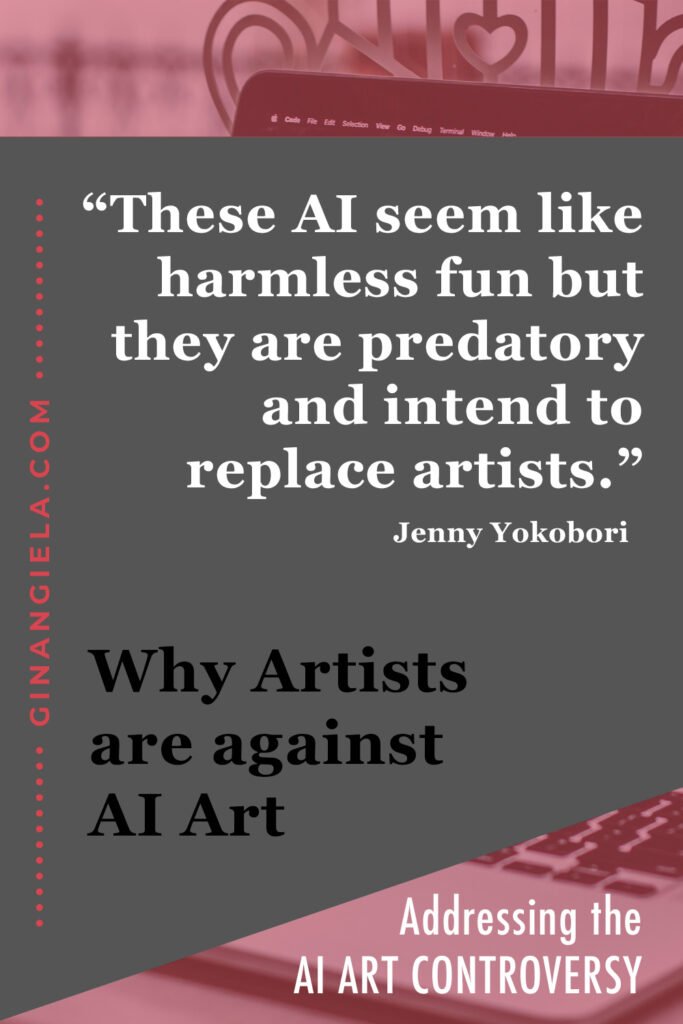

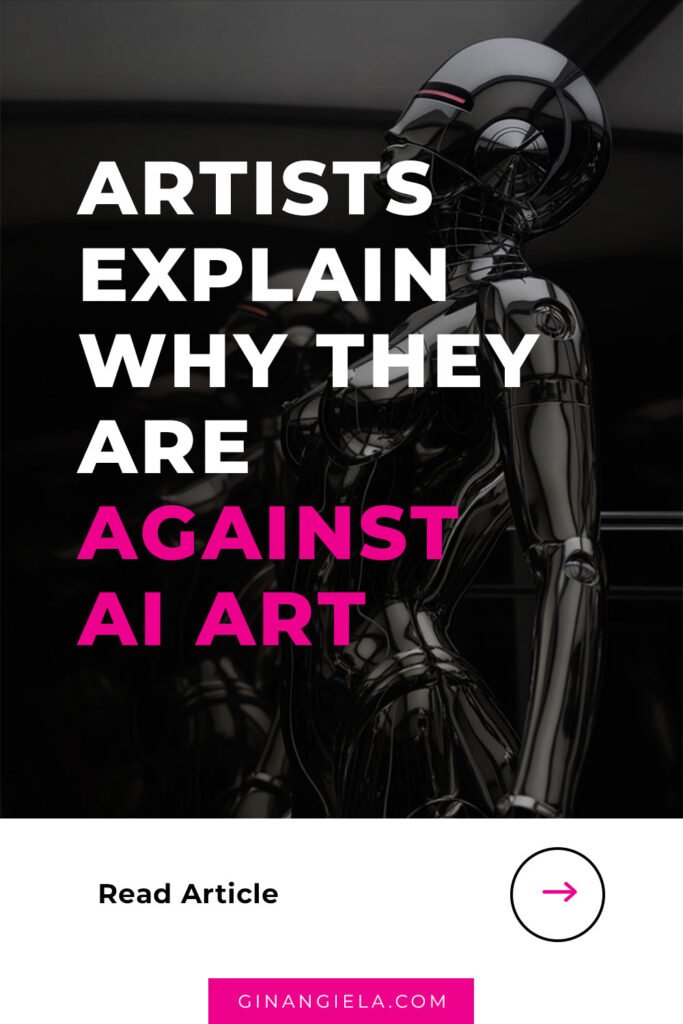
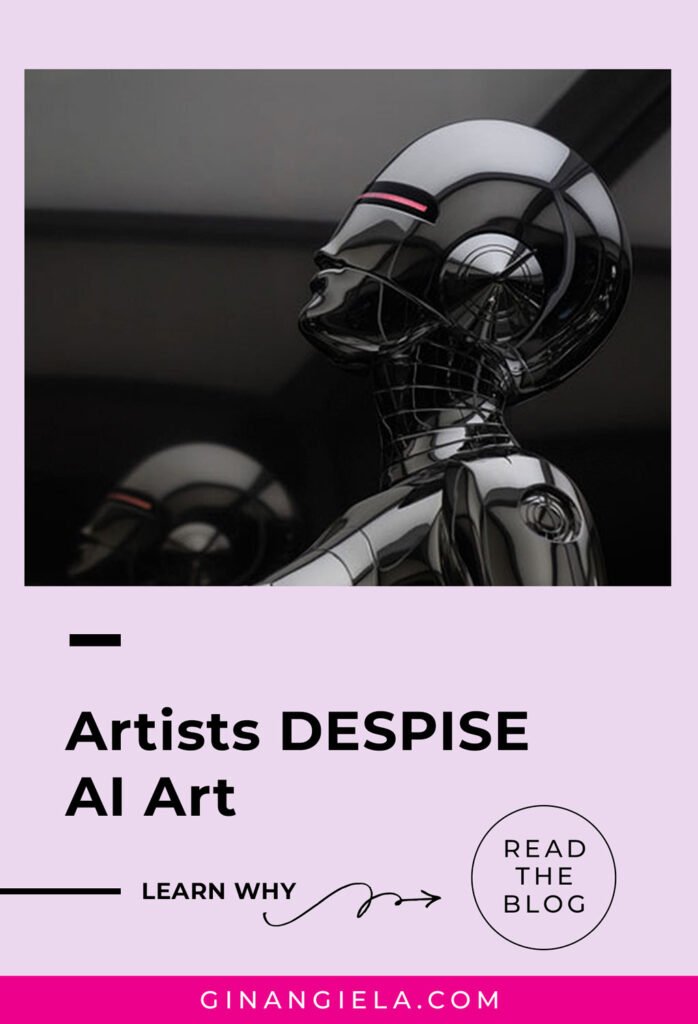


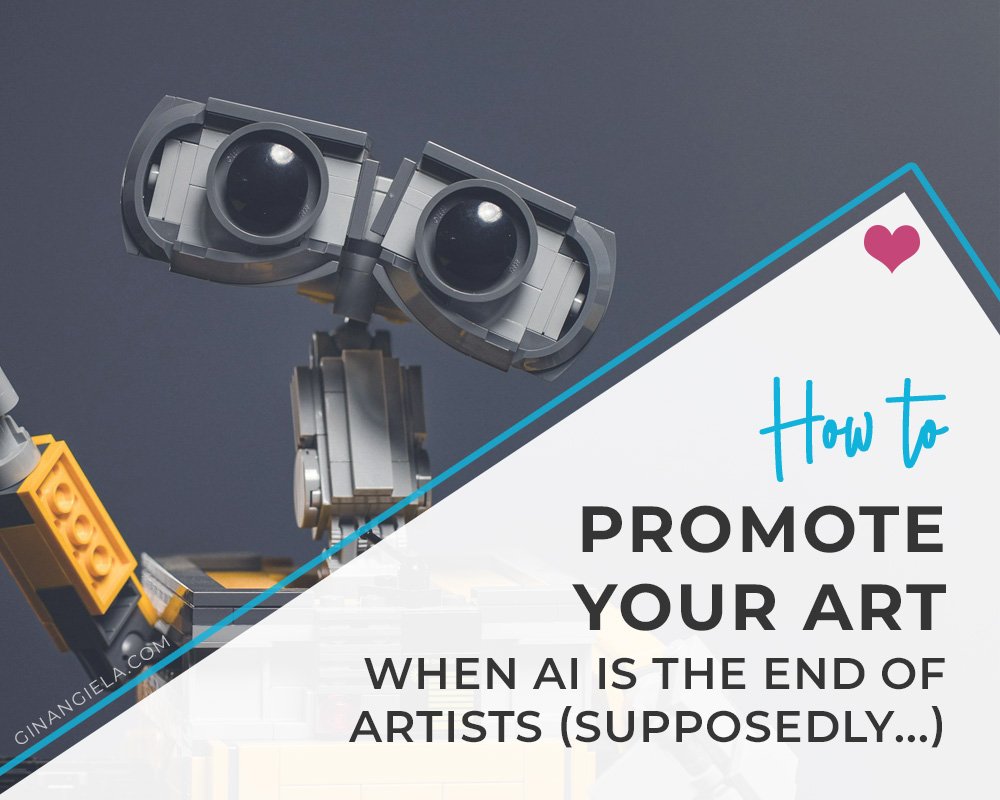
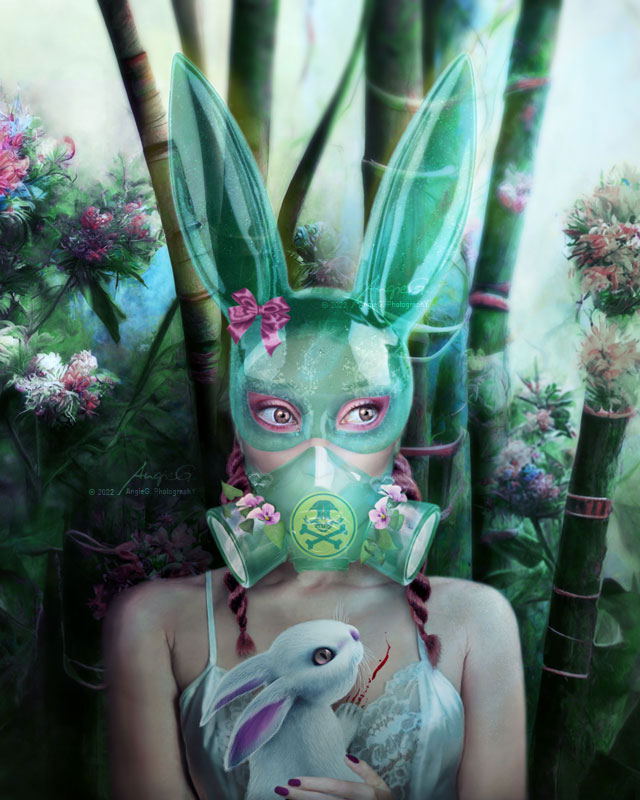
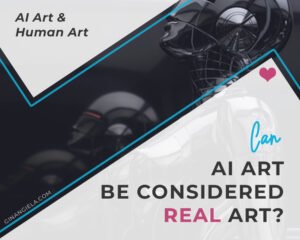
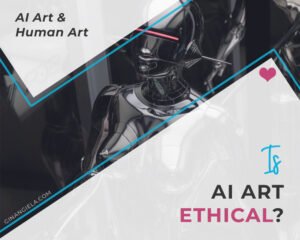
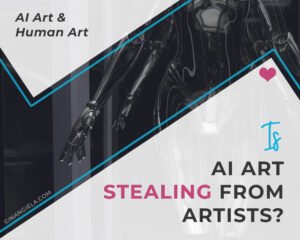
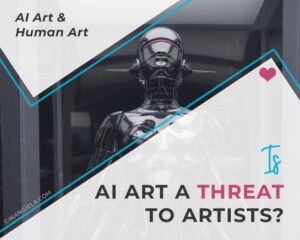


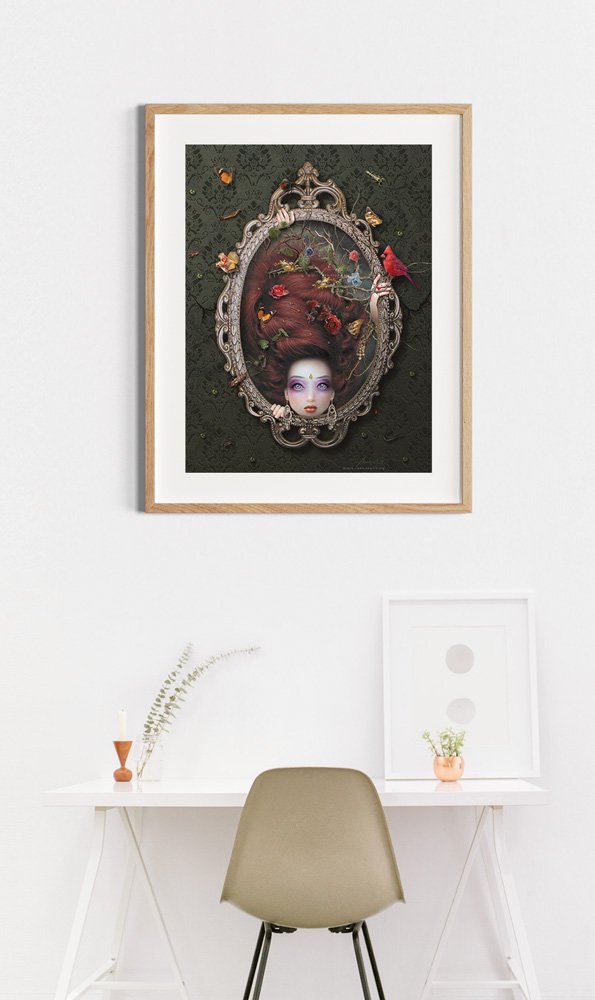
Hi! I am an artist and I am 100% for the use of AI as a tool so please do not speak for me!
Art is art is art. It is the expression of the soul and for me personally, I have to create in order to be happy. I know this is the case for so many – and I would never ever presume to tell another artist that how they choose to express their soul is wrong just because it isn’t ’what has always been done’. Tbh this whole ‘traditionalist’ mentality is so anti-artist as I believe the best artists are visionary and adaptable and resourceful. I have adhd and most of the time I have 5-20 creative ideas in my mind that ‘must be done now’. I use AI to assist me in producing these ideas which come from source imo (I am only the conduit). But please – continue speaking for me and trying to engender conformity – the literal most inartistic attitude ever. (Plus supporting capitalism is pretty unartist – like too, with all the advertising here but who am I to judge anyone?)
Art is art is art. Let people express themselves how they choose to. Cheers, Amye